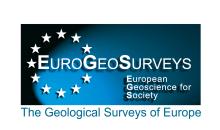Resource information
The aim of this study was to develop partial least-squares (PLS) regression models using diffuse reflectance Fourier transform mid-infrared (MIR) spectroscopy for the prediction of the concentration of elements in soil determined by X-ray fluorescence (XRF). A total of 4130 soils from the GEMAS European soil sampling program (geochemical mapping of agricultural soils and grazing land of Europe) were used for the development of models to predict concentrations of Al, As, Ba, Ca, Ce, Co, Cr, Cs, Cu, Fe, Ga, Hf, K, La, Mg, Mn, Na, Nb, Ni, P, Pb, Rb, Sc, Si, Sr, Th, Ti, V, Y, Zn and Zr in soil using MIR spectroscopy. The results were compared with those obtained where MIR models were developed with the same soils but using the concentration of elements extracted with aqua regia (AR). The PLS models were cross-validated against the experimental log-transformed XRF values of all the elements. The calibration models were derived from a set of 1000 randomly selected calibration samples. The rest of the samples (3130) were used as an independent validation set. According to the residual predictive deviation (RPD), predictions were classified as follows: “Good quality”, Ca (2.9), Mg (2.5), Al (2.3), Fe (2.2), Ga (2.2), Si (2.1), Na (2.0); “Indicator quality”, V (1.9), Ni (1.9), Sc (1.9), K (1.8), Ti (1.8), Rb (1.8), Zn (1.7), Co (1.7), Zr (1.6), Cr (1.6), Sr (1.6), Y (1.6), Nb (1.6), Ba (1.5), Mn (1.5), As (1.5), Ce (1.5); “Poor quality”, Cs (1.4), Th (1.4), P (1.4), Cu (1.4), Pb (1.3), La (1.2), Hf (1.1). Good agreement was observed between the RPD values obtained for the elements analysed in this study and those from the AR study. Despite the different elemental concentrations determined by the XRF method compared to the AR method, MIR spectroscopy was still capable of predicting elemental concentrations.




